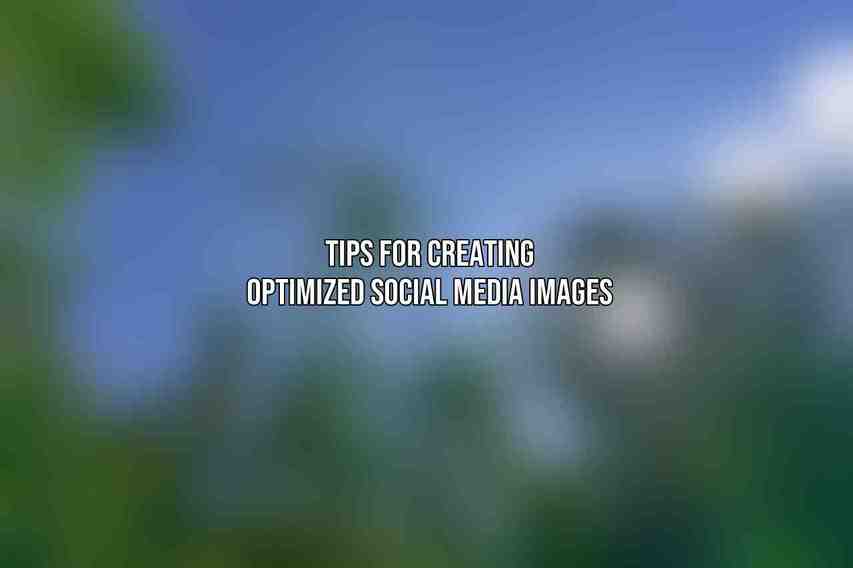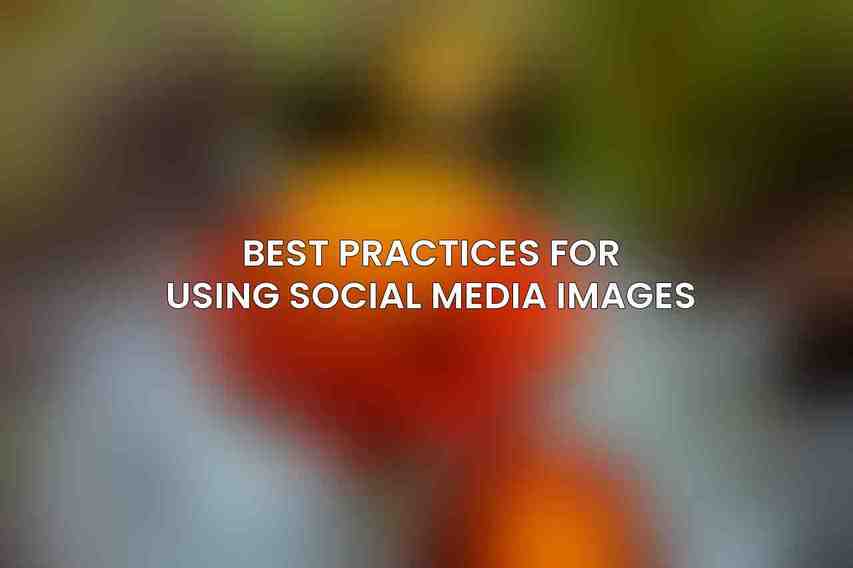Social media has evolved into a crucial communication and marketing tool, making it essential for individuals and businesses to optimize their online presence. One key aspect of achieving success on social media platforms is ensuring that images are displayed correctly across various devices and screens. The optimization of social media images plays a significant role in grabbing the attention of users and conveying a message effectively. This guide aims to provide an updated overview of the optimal image sizes for different social media platforms in 2024, equipping users with the knowledge to enhance their online visibility.
Importance of Optimizing Social Media Images for Optimal Display
Where visuals dominate online content, the quality and presentation of images can make a substantial difference in how an audience perceives a brand or individual. Social media platforms serve as virtual storefronts, and the first impression created by the images displayed can impact user engagement. By optimizing image sizes to fit each platform’s requirements, users can ensure that their content appears polished and professional, ultimately increasing visibility and engagement.
Overview of the Guide’s Purpose and Scope
The goal of this guide is to provide a comprehensive resource for individuals and businesses seeking to enhance their social media presence through effective image optimization. By offering updated recommendations for image sizes on popular platforms, users can tailor their visuals to align with each platform’s specifications. Understanding the nuances of image sizing for various social media channels empowers users to create visually appealing content that resonates with their target audience.
Image Size Recommendations by Platform
Making it crucial to adhere to the platform’s image size guidelines for optimal visibility:
| Image Type | Recommended Size |
|---|---|
| Profile Picture | 170x170px |
| Cover Photo | 820x312px |
| News Feed | 1200x630px (desktop), 600x315px (mobile) |
Instagram’s visual-centric platform requires specific image dimensions for various types of posts: Dive deeper into Top Design Tools for Elevating Your Social Media Content
| Image Type | Recommended Size |
|---|---|
| Profile Picture | 150x150px |
| Square Posts | 1080x1080px |
| Portrait Posts | 1080x1350px |
| Landscape Posts | 1080x566px |
| Stories | 1080x1920px |
Twitter’s fast-paced environment demands images that are optimized for quick consumption:
| Image Type | Recommended Size |
|---|---|
| Profile Picture | 400x400px |
| Header | 1500x500px |
| Tweets | 1200x675px (recommended), 600x335px (minimum) |
LinkedIn caters to a professional audience, necessitating polished image displays:
| Image Type | Recommended Size |
|---|---|
| Profile Picture | 400x400px |
| Cover Photo | 1584x396px |
| Company Page Banner | 1584x396px |
| Posts | 1200x627px (desktop), 1200x1200px (mobile) |
Pinterest’s focus on visuals requires high-quality images for optimal engagement:
| Image Type | Recommended Size |
|---|---|
| Profile Picture | 165x165px |
| Pins | 1000x1500px (recommended), 736x1104px (minimum) |
| Story Pins | 1080x1920px |
YouTube
YouTube, a video-centric platform, also emphasizes the importance of well-optimized images:
| Image Type | Recommended Size |
|---|---|
| Profile Picture | 98x98px |
| Channel Banner | 2560x1440px (desktop), 1536x375px (mobile) |
| Thumbnails | 1280x720px (recommended), 640x360px (minimum) |
Additional Image Considerations
Aspect Ratio
Maintaining the correct aspect ratio is crucial for ensuring that images appear as intended and avoid distortion on different devices and platforms. Understanding the aspect ratio requirements of each platform helps in creating visually appealing content that fits seamlessly within the designated spaces.
File Size
While high-quality images are essential for engaging content, it is equally important to consider the file size to ensure fast loading times and user-friendly browsing experiences. Compressing images without compromising quality can significantly improve website performance and user engagement.
Image Quality
Images should be clear, sharp, and visually appealing to capture the audience’s attention. High-quality images not only enhance the credibility of a brand but also contribute to a positive user experience, fostering increased engagement and interaction.
Type of Content
Different types of content, such as profile pictures, cover photos, posts, and stories, require specific image sizes and considerations to optimize their visibility and impact on social media platforms. Tailoring images to suit the intended content type ensures consistency and professionalism across the brand’s online presence.
Tips for Creating Optimized Social Media Images

Use High-Resolution Images
Utilize high-resolution images to maintain visual clarity and professionalism across social media platforms. Crisp images contribute to a positive user experience and convey a sense of quality and attention to detail.
Crop Images Accurately
Properly cropping images ensures that the focal point is emphasized and irrelevant elements are eliminated. By focusing on the most important aspects of the image, users can create visually compelling content that captures the audience’s interest.
Optimize File Size Without Compromising Quality
Balancing image quality with file size is essential for quick loading times and seamless user experiences. Leveraging image compression tools and techniques can help reduce file sizes while preserving image integrity. You can find more information on Content Design Basics for Social Media Mastery
Use Consistent Image Styles
Maintaining a consistent visual style across social media platforms reinforces brand identity and recognition. By adhering to a cohesive aesthetic, users can establish a strong visual presence that resonates with their target audience.
Test and Adjust Regularly
Monitoring the performance of social media images and making adjustments based on audience engagement metrics is crucial for optimizing content effectiveness. By analyzing data and feedback, users can refine their image strategies to maximize impact and reach.
Best Practices for Using Social Media Images

Use Captivating Images to Engage Audience
Choosing visually appealing and relevant images can capture the audience’s attention and encourage interaction. Compelling visuals can evoke emotions, drive engagement, and enhance the overall user experience.
Ensure Images Align with Brand Identity
Maintaining brand consistency through images helps reinforce brand identity and messaging. By aligning images with brand values and aesthetics, users can cultivate a strong brand presence that resonates with their audience.
Optimize Images for Different Devices and Platforms
Adapting images to suit various devices and social media platforms ensures a seamless viewing experience for all users. Responsive design principles can help optimize image display across different screen sizes and resolutions.
Track Image Performance and Make Adjustments
Regularly monitoring image performance metrics, such as engagement rates and click-through rates, allows users to gauge the effectiveness of their visuals. By analyzing data and making data-driven adjustments, users can continuously improve their image strategies for better results.
Summary of Key Image Size Recommendations
Optimizing social media images to meet platform-specific size requirements is essential for enhancing online visibility and engagement. By following the recommended image sizes for each platform, users can ensure that their content appears polished and professional across social media channels.
Importance of Staying Up-to-Date with Social Media Image Size Guidelines
Given the evolving nature of social media platforms, staying informed about the latest image size guidelines is crucial for maintaining a competitive edge and maximizing reach. Regularly updating image sizes and adapting to platform changes can help users stay ahead in the digital world.
Encourage Readers to Utilize the Guide for Optimal Results
By utilizing this comprehensive guide to social media image sizes, readers can equip themselves with the knowledge and tools necessary to create visually compelling content that resonates with their target audience. Implementing the recommended practices and tips outlined in this guide can lead to improved engagement, brand visibility, and overall social media success.
optimizing social media images is a fundamental aspect of online communication and branding. By adhering to platform-specific image size recommendations, considering additional image considerations, implementing best practices, and staying up-to-date with guidelines, users can leverage the power of visuals to enhance their social media presence and effectively engage their audience in 2024.
Frequently Asked Questions
What are the recommended image sizes for Facebook in 2024?
For Facebook in 2024, the recommended image sizes are 1200 x 630 pixels for shared images, 1200 x 628 pixels for link images, and 180 x 180 pixels for profile pictures.
What are the ideal dimensions for Instagram posts?
In 2024, the ideal dimensions for Instagram posts are 1080 x 1080 pixels. However, Instagram supports various aspect ratios, so it’s best to experiment and see what works best for your content.
What size should Twitter header images be in 2024?
For Twitter header images in 2024, the recommended size is 1500 x 500 pixels to ensure the image looks good on both desktop and mobile devices.
What image sizes work best for LinkedIn in 2024?
For LinkedIn in 2024, the recommended image sizes are 1200 x 627 pixels for shared images, 1584 x 396 pixels for header images, and 300 x 300 pixels for profile pictures.
Do image sizes matter on social media platforms?
Yes, image sizes do matter on social media platforms as they can impact how your content is displayed and whether it stands out to users. Using the recommended sizes can help optimize your images for each platform’s layout and ensure a professional appearance.

